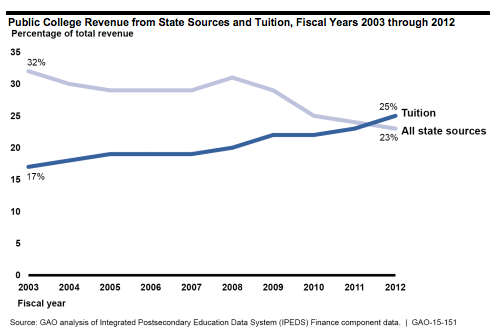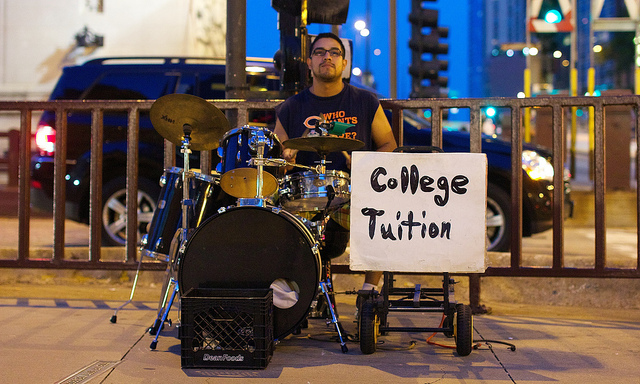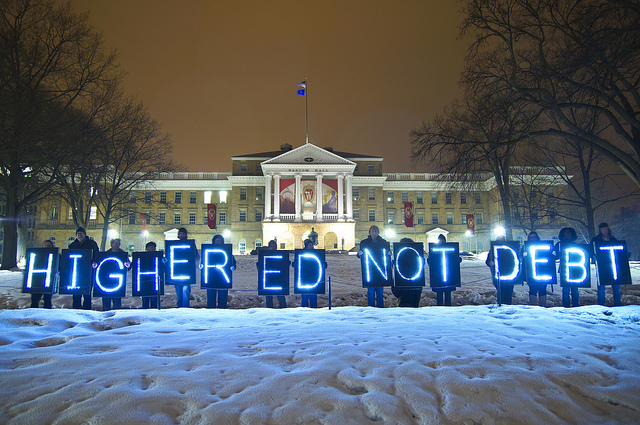You would be hard pressed to find anyone who disagrees with the statement that college cost have risen significantly in the past few years. How we got to the point where an average yearly state in-state tuition is $9,410 for a four-year public institution (The College Board) is up for debate. One of the biggest contributors, but least recognized factor, in the perceived increase in college tuition comes not from the institutions themselves, but from their state governments. Tuition has not increase exponentially, state funding has decreased at extraordinary rates.
Over the past decade, college-related cost (e.g. tuition, room, fees, etc.) have consistently risen an average of 4-7% annually. Historically, this increase has been offset by state subsidies, but since the 2008 recession, states have continued to divest in their public institutions of higher education. Since 1980, states have reduced funding on average by 40.2%. Colorado ranks first with a 69.4% decrease in funding. Texas, which used to cover up to 47% of college costs now only contributes 12% to the operational budget for its state universities. Arizona, home to ASU, the nation’s largest public institution, is projected to completely eliminate all support for higher education by 2032.
Essentially, over the past 35-years, for every one percent institutions have increases their rates, states decreased their funding by three percent. These cuts lead to widening gaps in coverage, and families are now expected to contribute up to an additional 28% in order to cover the cost of tuition alone.
Despite the fact that many states budgets are becoming easier balance during the economic recovery, returning to pre-recession investment levels, is still a challenge. The Washington Post reports, “The number of students enrolled in public colleges rose by 20 percent from the 2002-2003 school year to 2011-2012, according to the report. Meanwhile, median state funding per student fell 24 percent, from $6,211 in fiscal year 2003 to $4,695 in fiscal year 2012.” The increase in public college enrollments makes state subsidies at any level a hardship.
If this trends continue, is it still fair to call these institutions public colleges and universities?

 5 Myths Behind the Rising Cost of College in America: Part I
5 Myths Behind the Rising Cost of College in America: Part I